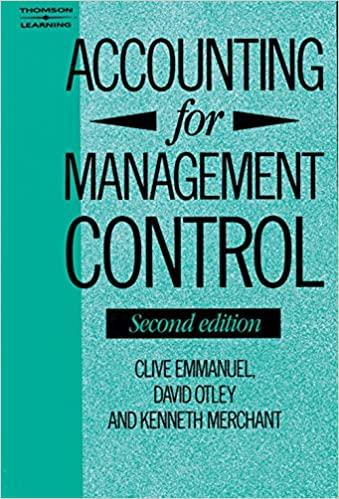Photon Technologies, Inc., a manufacturer of batteries for mobile phones, signed a contract with a large electronics manufacturer to produce three models of lithium-ion battery packs for a new line of phones. The contract calls for the following: Battery Pack Production Quantity 200,000 PT-100 PT-200 100,000 PT-300 150,000 Photon Technologies can manufacture the battery packs at manufacturing plants located in the Philippines and Mexico. The unit cost of the battery packs differs at the two plants because of differences in production equipment and wage rates. The unit costs for each battery pack at each manufacturing plant are as follows: Plant Product Philippines Mexico PT-100 $0.95 $0.98 PT-200 $0.98 $1.06 PT-300 $1.15 $1.34 The PT-100 and PT-200 battery packs are produced using similar production equipment available at both plants. However, each plant has a limited capacity for the total number of PT-100 and PT-200 battery packs produced. The combined PT-100 and PT-200 production capacities are 175,000 units at the Philippines plant and 160,000 units at the Mexico plant. The PT-300 production capacities are 75,000 units at the Philippines plant and 100,000 units at the Mexico plant The cost of shipping from the Philippines plant is $0.21 per unit, and the cost of shipping from the Mexico plant is $0.08 per unit. (a) Develop a linear program that Photon Technologies can use to determine how many units of each battery pack to produce at each plant to minimize the total production and shipping cost associated with the new contract. If the constraint is one, enter "1". If the amount is zero, enter "o". Let P = number of PT-100 battery packs produced at the Philippines plant P2 = number of PT-200 battery packs produced the Philippines plant P3 - number of PT-300 battery packs produced at the Philippines plant M1 = number of PT-100 battery packs produced at the Mexico plant M2 - number of PT-200 battery packs produced at the Mexico plant M3 - number of PT-300 battery packs produced at the Mexico plant Min P1+ P2 + P3 + M1 + M2+ M3 P1 + P2+ P3 + MI + M2+ M3 = Production PT-100 Pi + P2 + P3 + M1 + M2 + M3 - Production PT-200 Pi + P2 + P3 + M1 + M2+ M3 Production PT-300 P1+ P2 + P3 + M1 + M2 + M3 5 Capacity Phi PT-100 & 200 Pi + P2 + P3 + M1 + M2 + M35 Capacity Mex PT-100 & 200 Pi + P2 + P3 + M1 + M2+ M35 Capacity Phi PT-300 P1+ P2 + P3 + Ml + M2+ M3 s Capacity Mex PT-300 P1, P2, P3, M1, M2, M3 > 0 (b) Solve the linear program developed in part (a), to determine the optimal production plan. If the amount is zero, enter "O". Qty Produced Phillipines Mexico PT-100 PT-200 PT-300 Total Cost = $ (c) Use sensitivity analysis to determine how much the production and/or shipping cost per unit would have to change to produce additional units of the PT 100 in the Philippines plant. If required, round your answer to two decimal digits. At least d) Use sensitivity analysis to determine how much the production and/or shipping cost per unit would have to change to produce additional units of the 200 in the Mexico plant. unit If required, round your answer to two decimal digits. The management of Hartman Company is trying to determine the amount of each of two products to produce over the coming planning period. The following information concerns labor availability, labor utilization, and product profitability: Labor-Hours Required (hours/unit) Department Product 1 Product 2 Hours Available A 1.00 0.35 100 B 0.30 0.20 36 C 0.20 0.50 50 Profit contribution/unit $30.00 $15.00 (a) Develop a linear programming model of the Hartman Company problem Solve the model to determine the optimal production quantities of products 1 and 2 If required, round your answer to two decimal places. Product 1 Product 2 Production (b) In computing the profit contribution per unit management does not deduct labor costs because they are considered fixed for the upcoming planning period. However, suppose that overtime can be scheduled in some of the departments, which departments would you recommend scheduling for overtime? - Select your answer - What is the upper limit of what you would be willing to pay per hour of overtime in the department you recommended? Taaniadania wote wa decimal places - Select your answer - What is the upper limit of what you would be willing to pay per hour of overtime in the department you recommended? If required, round your answer to two decimal places. (c) Suppose that 8, 6, and 8 hours of overtime may be scheduled in departments A, B, and C, respectively. The cost per hour of overtime is $18 in department A $22.50 in department B, and $12 in department C. Formulate a linear programming model that can be used to determine the optimal production quantities If overtime is made available. What are the optimal production quantities, and what is the revised total contribution to profit? If required, round your answer to two decimal places. Product 1 Product 2 Production If required, round your answer to nearest whole number Total Profits How much overtime do you recommend using in each department? If required, round your answer to two decimal places. If you answer is zero, enter "o". OT hours: Dept. Used A B What is the increase in the total contribution to profit if overtime is used? If required, round your answer to nearest whole number










